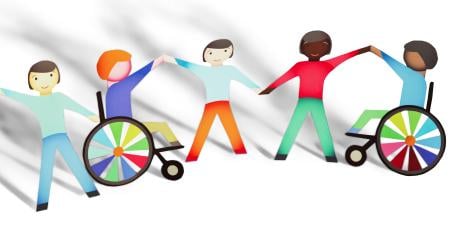Case
Jordan is a 17-year-old senior in high school who has been his football team’s star quarterback, led his team to two state championships, and has a real possibility of receiving a full scholarship to a top college sports program next year.
In his last session of summer training camp, Jordan took a fierce hit, a tackle that knocked him to the ground. He landed on his right arm and shoulder and instantly felt sharp pain and then lost some sensation. Jordan was taken to the hospital. An MRI was taken, which showed that Jordan had a torn labrum in his right shoulder that would require surgery and months-long recovery, meaning that he would miss the rest of his final season. A week later, Jordan underwent surgery and soon thereafter began seeing physiatrist Dr. Brown for further treatment and follow-up.
Two months after his surgery and continued treatment with Dr. Brown, Jordan felt that his recovery was lagging. He was worried that his slow recovery process coincided with the recruitment period for college programs. Top programs were increasingly inquisitive about his recovering shoulder, so he scheduled an urgent appointment with Dr. Brown.
Dr. Brown had known instances in which this particular type of injury ended a quarterback’s athletic career. She had also read about a few cases in which athletes recovered fully from the injury. Since so much of recovery depends on the injured person’s following the rehabilitation and physical therapy plans, Dr. Brown wanted Jordan to approach his injury with the optimism that adherence to the plan would enable him to return to athletics. At the same time, she did not want to hold out false hope that might keep Jordan focused exclusively on football when, in the long term, that might not be the best use of his senior year.
Commentary
This scenario—frequently encountered by physiatrists who practice sports medicine—encompasses many of the common challenges in care and return-to-play decisions for high-level athletes. Physiatrists with board certification in sports medicine are physicians who complete postgraduate training in physical medicine and rehabilitation, in addition to a 12-month sports fellowship and a written examination [1]. Sports medicine physiatrists specialize in the treatment and prevention of medical and orthopedic injuries and ailments related to sport and exercise, using a variety of diagnostic and therapeutic aids to assist athletes at all levels [1].
In the case presented, a high school quarterback has sustained an injury to the glenoid labrum, a cartilaginous structure of the shoulder that deepens the shoulder socket and provides stability. Nonoperative treatment for a labral tear traditionally includes physical therapy to restore function of the shoulder and, to reduce pain and inflammation, the use of heat/ice, ultrasound, and possibly oral analgesics, anti-inflammatory medications, and corticosteroid injections into the glenohumeral joint. Surgical management of this condition may be considered under certain circumstances, particularly if full function has not been restored after optimum nonoperative care.
Postoperative management for labral repairs by the treating physician, usually assisted by an athletic trainer, physical therapist, or both aims to improve scapular stabilization and the strength and stability of the shoulder girdle and to restore painless range of motion. Additionally, it is important to address biomechanical contributors to the injury by taking a full evaluation of the kinetic chain, including scapular strength and positioning; thoracic and lumbar spine rotation and mobility; hip strength and stability; and knee, ankle, and foot mechanics. These principles of evaluation and treatment apply to most sports injuries we treat in athletes.
Although Jordan, the athlete in the case scenario, is eager to resume playing football, the primary duty of his physiatrist, Dr. Brown, is to offer appropriate medical treatment and guidance to ensure Jordan’s safe return to sports participation.
Jordan feels pressure to demonstrate that he is ready for full participation in football, possibly earlier than his recovery from surgery would allow, so the evaluation and management of his injury, like that of many sports injuries, must take into account the tension between the ethical principles of respect for autonomy and beneficence. The principle of respect for autonomy allows an athlete (or, if the athlete is a minor, his or her parents or guardian) to make a decision about whether to receive medical care and follow medical advice about when it is safe to participate in sport. However, the team physician, who is usually designated to determine medical clearance for return to play based on the rules of the institution or team, must give priority to his patient’s best orthopedic care. Doing so follows the principle of beneficence.
Clearly, Jordan has many personal incentives for an expedited return to play—the enjoyment of participating in sport and financial considerations such as a collegiate scholarship and the possibility of playing professionally—that place him at risk for adverse health consequences if he returns to sports participation before the injury has been properly addressed. Family members, athletic staff, and others may also have incentives to see an athlete return to sports participation. However, the long-term health of the athlete must be the primary factor guiding medical decision making. Particularly in youth sports, the pressure to specialize and perform at a high level may increase risk for overuse injuries and burnout [2].
The scenario suggests that Jordan is not ready to return to full participation in football. A good relationship with Jordan is critical to Dr. Brown’s ability to talk effectively with him about expectations for and stages of recovery to ensure Jordan’s safe return to play. We find that a good patient-physician relationship can be developed by the physician’s communicating commitment to the shared goals of successful return to sports, the physician’s effective communication with the athlete and treatment team (including athletic trainer, physical therapists, and other staff), and regular clinical visits to evaluate treatment success and address the athlete’s questions or concerns.
Dr. Brown and Jordan should discuss the goals of both safe return to sports participation and prevention of future long-term health problems by optimizing management of the current injury. A return-to-play progression plan provides goals for each stage of recovery from an injury up to full clearance for participation and can help an athlete understand when it would be appropriate to resume playing a sport without restrictions. The plan involves progression from basic isolated strengthening and stretching to advanced skill-specific tasks, noncontact practice, and participation in competition. In addition to guiding rehabilitation following an injury, the plan provides better buy-in: the athlete can focus on each goal in the progression, evaluate whether or not he or she has achieved that goal, and assess how that relates to successful participation in sport. In this way, the physician is not the “bad guy” who says that the athlete may or may not return to play. It is the athlete’s meeting (or not meeting) the goals in the progression plan that determines return to play. Treatment for the athlete must address both the physical impairments and their impact on other aspects of his or her life.
A multidisciplinary approach to treating sports injuries is helpful for managing the ethical issues that may arise from medical decisions and planning safe return to play. Conflicts of interest may arise in sports medicine if, as mentioned above, the goal to perform well in a sport during a specific timeline does not match the medical guidelines for successful return to play. The athlete (or guardian, for athletes younger than 18) would need to sign a waiver to disclose personal health information to others who are not directly involved in medical care—for example, the coach or athletic trainer. If athletes are younger than 18 years of age or request that family be informed of their medical status, communication of the treatment plan with the family may be helpful. By establishing effective communication among the physician, athlete, and others, ethical problems in management of sports injuries may be best addressed.
References
- Fredericson M. On the horizon: defining the future of sports medicine and the role of the physiatrist. PM R. 2012;4(10):707-710.
- DiFiori JP, Benjamin HJ, Brenner J, et al. Overuse injuries and burnout in youth sports: a position statement from the American Medical Society for Sports Medicine. Clin J Sport Med. 2014;24(1):3-20.



